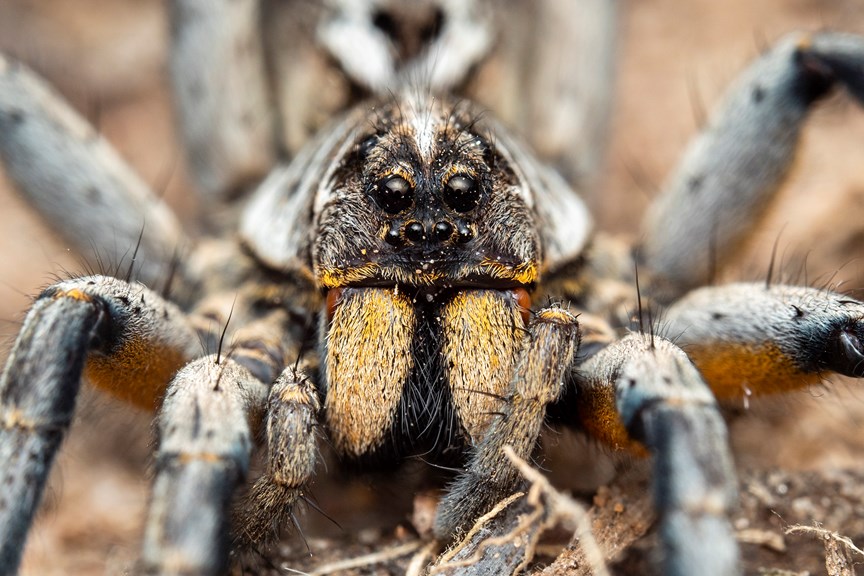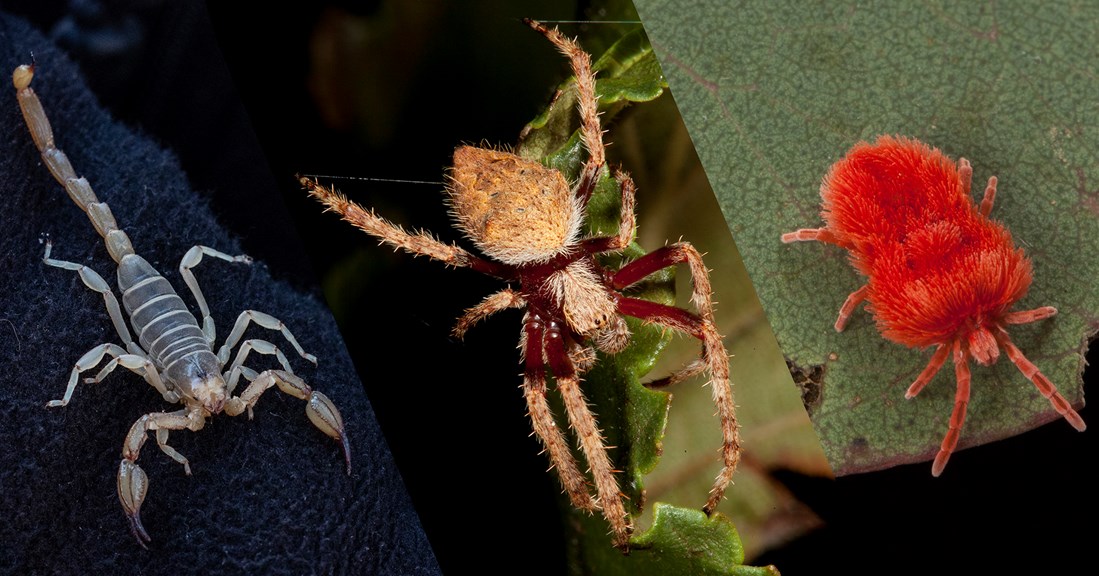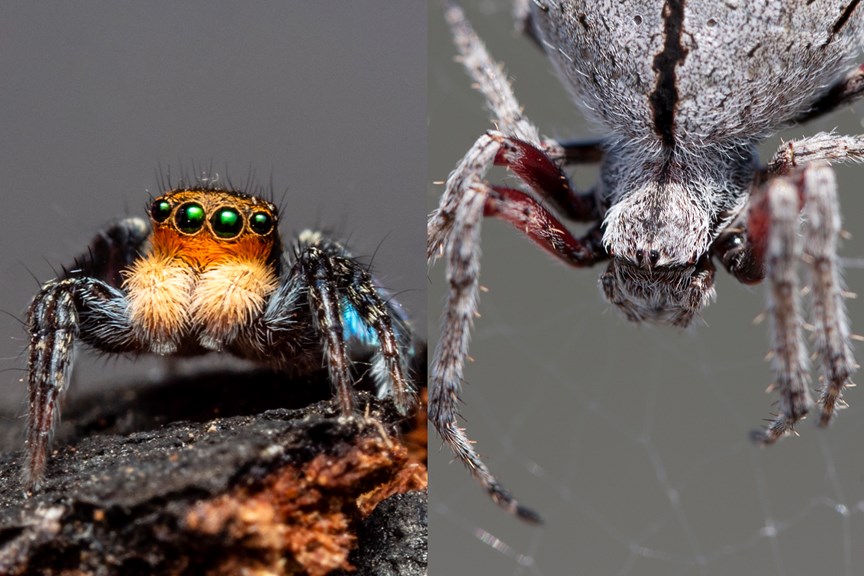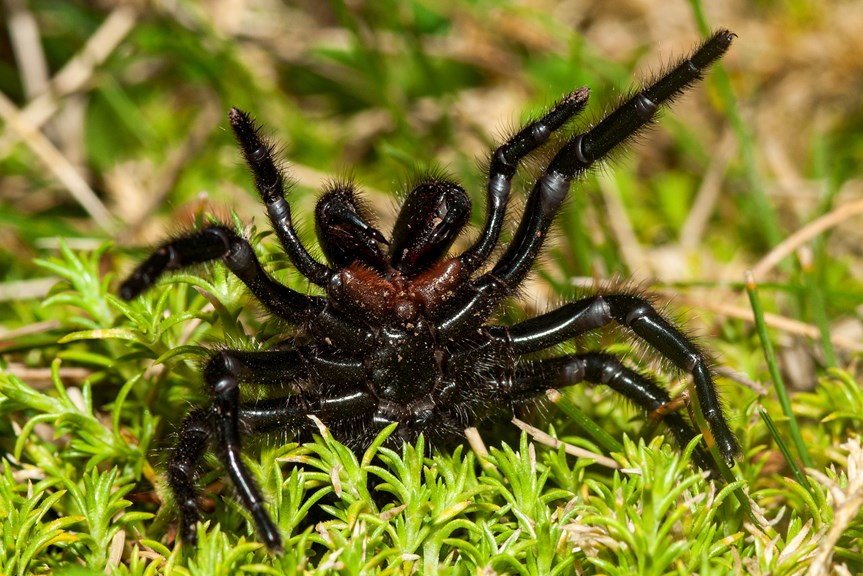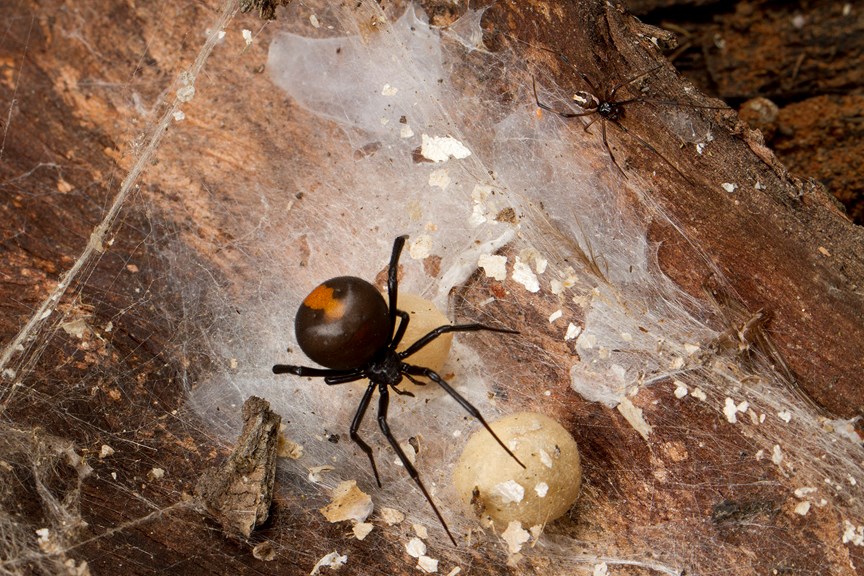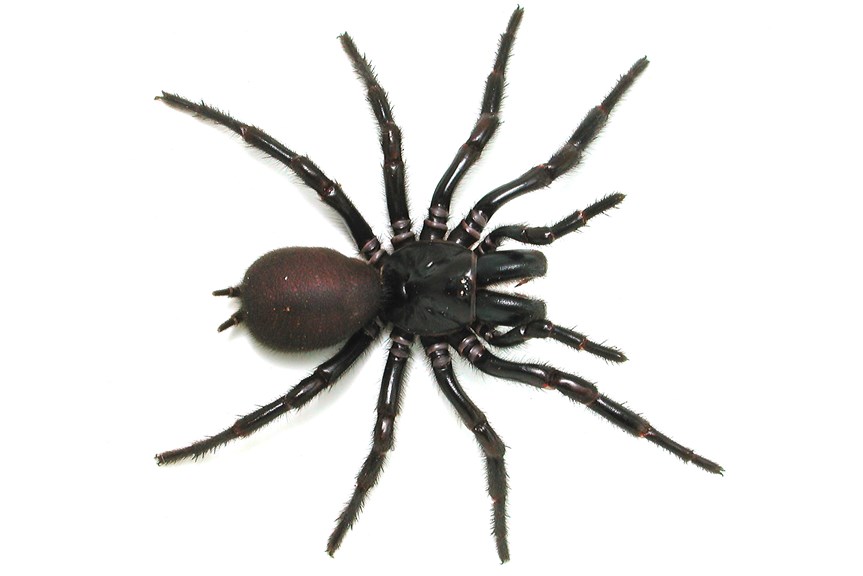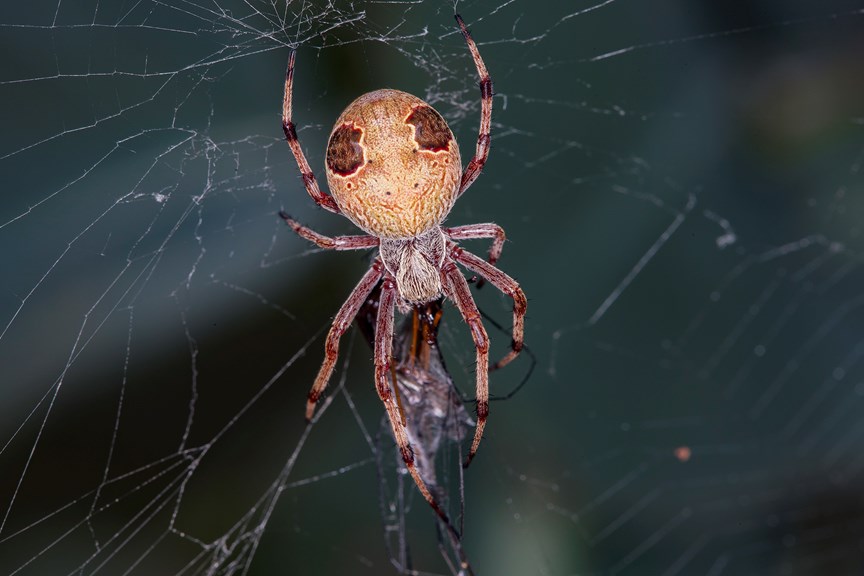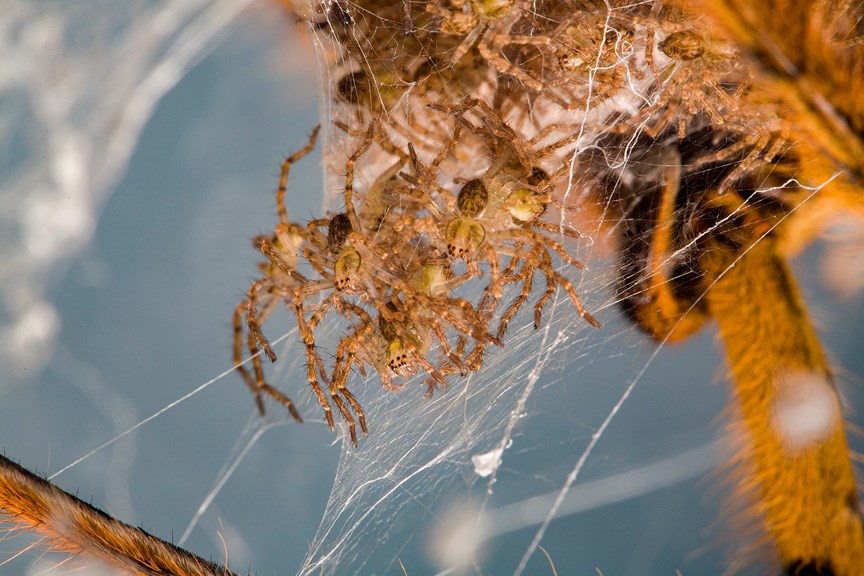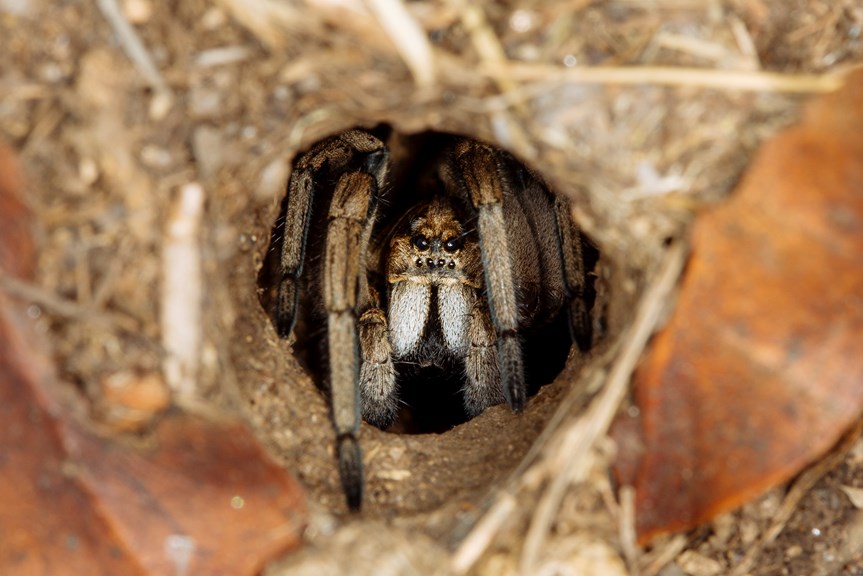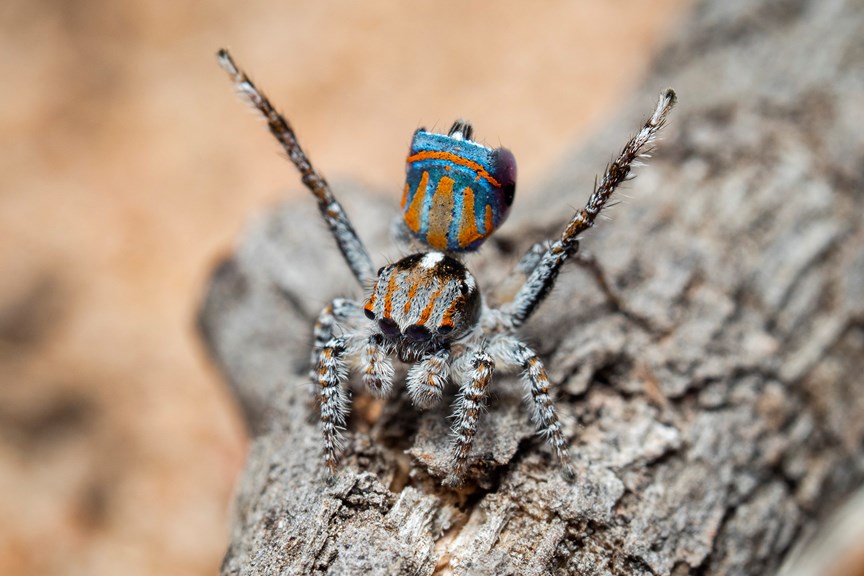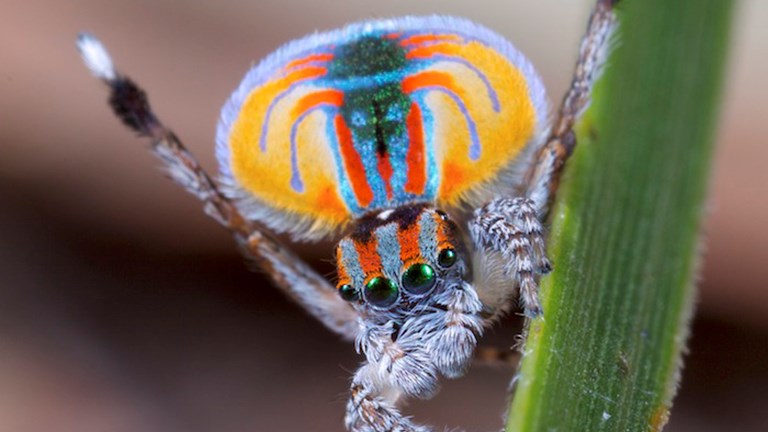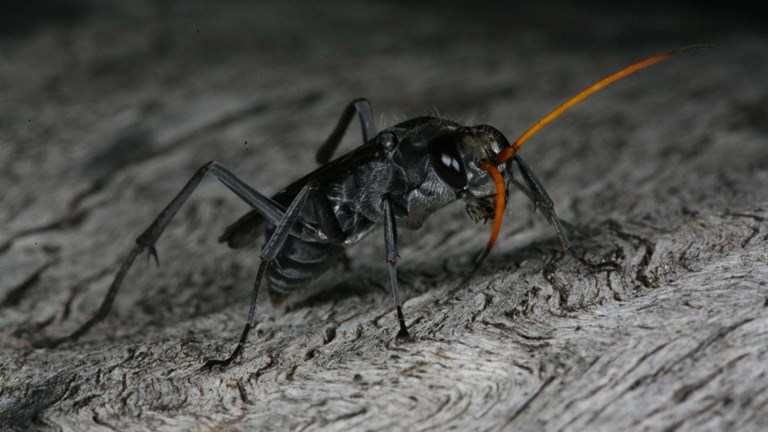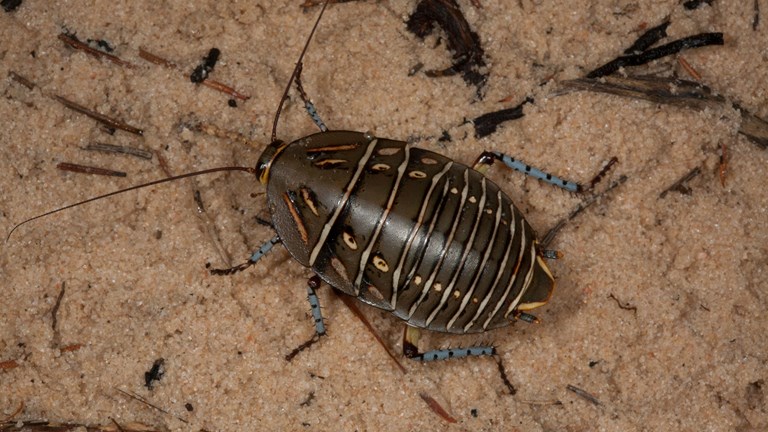Top spider myths
A myth for each leg: fearsome funnel-webs, deadly Daddy Long-legs and swallowing spiders in your sleep.
Spiders are a truly diverse group, with more than 40,000 described species in the world—and those are just the ones we know about.
But they have a bad reputation, especially venomous Australian species like the Sydney Funnel-web and Redback Spider.
Museums Victoria receives hundreds of questions about spiders every year: here are some of the more persistent myths.
1. Spiders are insects
Spiders are arachnids, a group of creatures that includes other animals like ticks, scorpions and mites.
The name comes from the Greek for spider, Arachne, which itself is taken from the name of a weaver from ancient Greek mythology, who was changed into a spider after challenging the god Athena to a contest of skill.
But that’s where the mythical part ends.
There are spiders that have evolved to resemble their insect prey but there are a few things that immediately separate spiders and insects.
Firstly, spiders possess eight legs; insects have six.
Adult insects have three body segments—the head, thorax (where the legs and any wings are attached) and abdomen.
Spiders have two body segments—the cephalothorax (the head and thorax fused into one segment) and the abdomen.
While many spiders also have eight eyes, it is not the case for all species—some have fewer eyes, and they can be arranged in different ways on the spider’s cephalothorax.
2. All spiders are aggressive
Of all the billions and billions of spiders in the world not one of them has a diet that includes humans.
For the most part, spiders are timid and prefer not to interact with people—the only reason they may act aggressively is if they feel threatened.
This may happen if we step on a spider, pick one up, or threaten an egg sac that the female may be guarding.
Even Redback Spiders, which do have venom capable of killing a human, will often fall to the bottom of their webs and play dead if threatened.
‘What about those aggressive funnel-webs that rear back to strike?’ is something we hear often, and it is a fair point.
The funnel-web spider can look particularly scary when threatened, but that stance comes from practicality.
Most encounters with funnel-webs occur when someone digs one up or disturbs a male while it is out searching for a female.
The Funnel-web Spider has what is known as paraxial fangs that are held parallel under its head, pointing backwards.
The only way the spider can respond to a threat is to rear back, (making itself look as big as possible), and raise its fangs in readiness to strike downwards if it needs to.
Comparatively, a huntsman spider has horizontally opposed, or diaxial, fangs so it doesn’t have to lift its head or rear back to strike.
3. All Australian spiders are deadly to humans
Ah yes, the land down under where everything will kill you—this myth does not go away.
While Australia is home to some of the most venomous animals in the world, the vast majority of Australian spider species are not dangerous to humans.
Australia has well over 3,000 known species of spider, and of those we have only two species that are known to cause human fatalities.
Firstly the Sydney Funnel-web—often cited as one of the deadliest spider species in the world.
It is responsible for the deaths of 13 people, all thought to have resulted from bites from the male of the species.
But a bite from other species of funnel-webs, including several species of Hadronyche, (the genus found in Victoria), is not considered life-threatening.
The Sydney Funnel-web itself hasn’t caused a death since 1981, thanks to the development of antivenoms.
What about Redback Spiders?
According to the latest national figures, 666 people were treated for spider bites in hospital across Australia in 2017-18 and 283 of those were from Redbacks.
26 of those cases were administered antivenom, and there were no deaths.
In fact there hasn’t been a confirmed death from a Redback Spider bite since the development of an antivenom for this species in 1956.
So, even two of the ‘most deadly spiders in the world’ aren’t doing much to earn that title.
4. Daddy Long-legs is the world’s most venomous spider but its fangs are too short to pierce human skin
This one can be confusing as there are two different groups of arachnids that go by the common name Daddy Long-legs.
There are the house-loving spiders—one of the most common species being the introduced Pholcus phalangioides—and the non-venomous, non-spider—of the order Opiliones—also known as Harvestmen.
But let’s just focus on the spider.
The Daddy Long-legs is venomous, and it does have short fangs, but that is where the myth’s grounding in reality ends.
This spider can be provoked into biting and, even with those short fangs (assuming you present it with a soft bit of skin and not a tough heel), can pierce our skin.
But a slight burning sensation is about as bad as it gets.
Researchers have even analysed its venom and concluded, ‘effects of bites on humans and other mammals are inconsequential’.
So where did this myth come from?
Possibly the fact that the Daddy Long-legs spiders kill and eat Redback Spiders.
If they can kill these deadly spiders Daddy Long-legs must be even more dangerous to us, right?
Fortunately not but it’s probably worth keeping them around to keep the Redbacks in check, at least.
5. White-tailed Spider bites will lead to necrosis and possible limb amputation
Another persistent myth that has been around for decades, despite a lack of evidence to support it.
The story goes that the venom, or bacteria on the fangs of the White-tailed Spider will cause ulceration or necrosis (the death of body tissue), that can lead to the loss of limbs.
But it has been thoroughly debunked.
Australian scientists investigated 130 confirmed White-tailed Spider bites between 1999 and 2002, and found no cases of necrotic lesions.
Reaction to White-tailed Spider bites varied from minor effects to a painful red lesion—unpleasant, but not nearly as bad as the myth.
The best way to avoid being bitten by these spiders is to shake out any clothes, shoes or towels you leave lying on the floor because these are some of their favourite hiding spots.
It is known, however, that bites from spiders from the genus Loxosceles may cause necrosis.
This genus is not native to Australia but a few species have been accidentally introduced.
Fortunately, they are not widespread and are not aggressive spiders, but any bite from a spider is to be avoided where possible.
6. All spiders use webs to catch their prey
Not quite—all spiders can produce silk and make webs, but not all of them use webs to catch their prey.
Generally speaking, spiders can be separated into two groups: mygalomorphs and araneomorphs.
Mygalomorphs are typically stocky and spend most of their time on the ground foraging, or ambushing prey from a burrow.
It is an ancient group that includes some of the world’s heaviest spiders, like tarantulas.
Araneomorphs, meanwhile, are a more modern group that include the majority of species.
While it is only members of this group that spin those elaborate webs to catch prey, even some of these species have kicked the web habit.
Hunstman Spiders, for example, seek out their food by sensing vibrations and once they have grabbed their prey bite it and inject their venom; they don’t swaddle their prey in silk, as is characteristic of many of the web building spiders.
Huntsmans still use silk, but usually to help them get about or to construct an egg sac.
Jumping spiders employ their silk in an unusual way by releasing a dragline that helps to stabilise them in mid-air.
So, spider silk is no one-trick pony.
7. The only good spider is a dead spider
For many of us the first reaction to a spider is fear, and often involves reaching for a can of spray or a shoe.
The reality is that a world without spiders would be a very different place.
An estimated 25 million tonnes of spiders populate the planet, and they eat between 400 and 800 million tonnes of invertebrates a year—insects that could otherwise pose a threat to us or our food sources.
Spiders themselves are also food for thousands of the world’s bird and mammal species.
Let’s keep them around, shall we?
8. You swallow spiders while you sleep
This myth probably says more about humans than it does spiders but is ingrained in popular culture: ‘On average people swallow eight spiders a year in our sleep’.
Think of it from the point of view of a spider—you are searching for prey (small insects or other spiders) and happen across a very large and potentially noisy moving object.
Why would you want to climb into its mouth? It is not an attractive option.
The truth is we pose much more of a threat to spiders than they do to us, so it begs the question: why do these eight-legged arachnids cause such fear and panic in so many people?
Caution and fear are good survival strategies, especially given Australia has spiders capable of causing fatalities: notably the Sydney Funnel-web and the Redback.
But as we’ve already discussed, they haven’t resulted in a human fatality in decades.
Horses, on the other hand, were involved in 172 deaths from 2001 to 2017 but we regularly come out in droves to watch them go round in circles.
So, what is it about spiders?
One study found people were particularly triggered by their ‘leginess’, ‘unpredictability of movement’, and ‘hairiness’.
Arachnophobia can be debilitating, but it is possible to overcome this fear.
Museums Victoria’s Joseph Schubert admits he was terrified of spiders as a child, but he has made a career out of studying them.
Admittedly his favourites are peacock spiders—the cute and colourful internet dancing sensations—but perhaps it is a good place for people to start to appreciate spiders.
And appreciate them we should.
In addition to their prodigious consumption of invertebrates, spider venom is looking incredibly promising in the field of medical research.
Researchers have found tarantula venom may be used to produce addiction-free painkillers, while the venom of a funnel-web from K’gari (Fraser Island) is being studied for its ability to prevent damage from heart attacks.
Spiders really are an amazing group of animals.
Keen to get a closer look at some of these spiders? Check out the Bugs Alive! exhibition at the Melbourne Museum.
Still have a question? Ask us!

